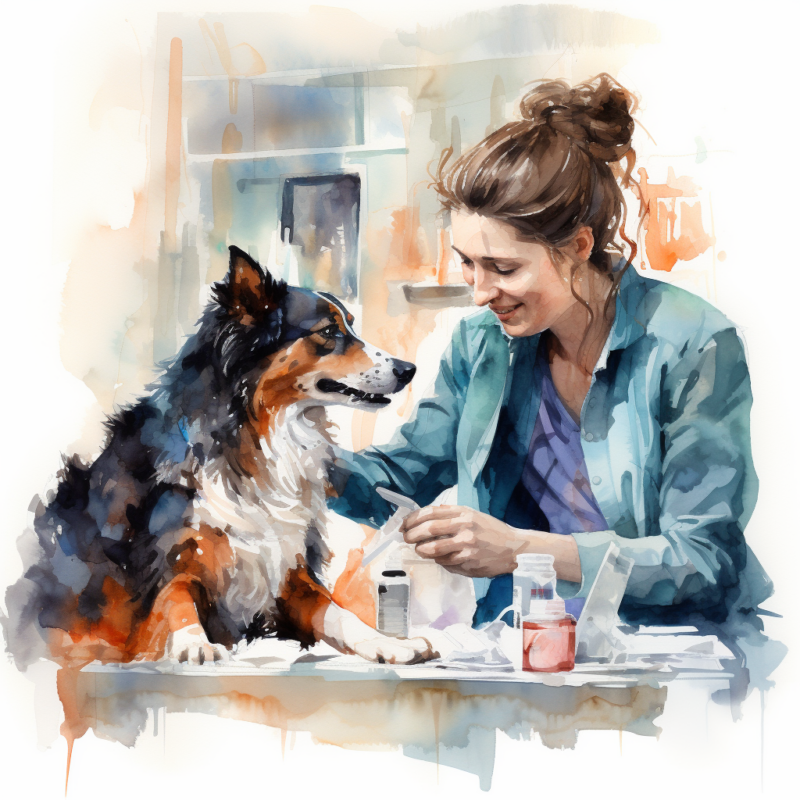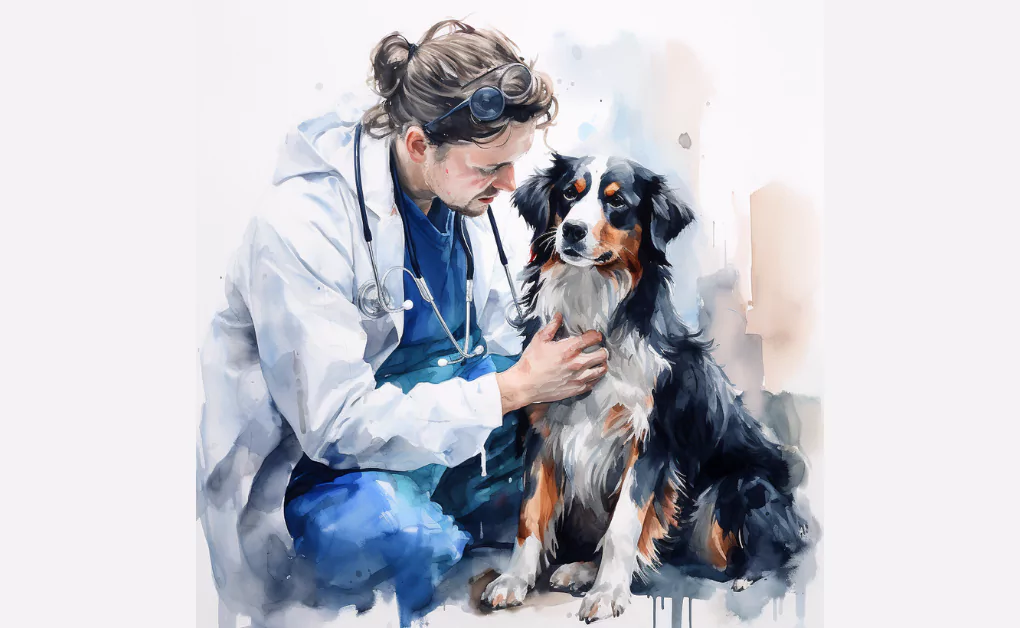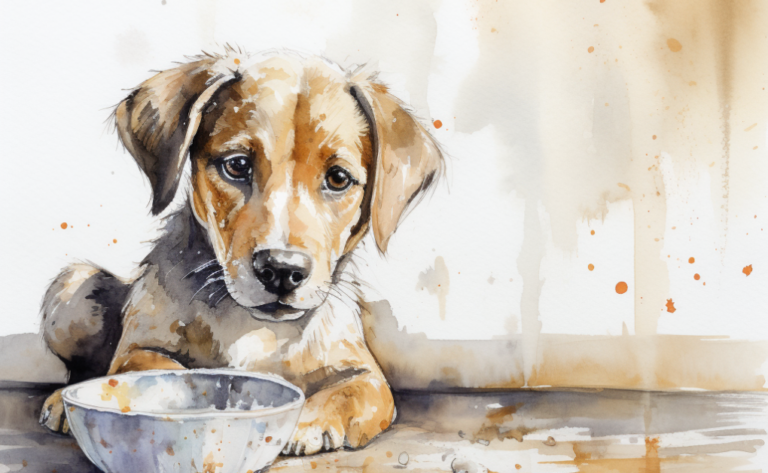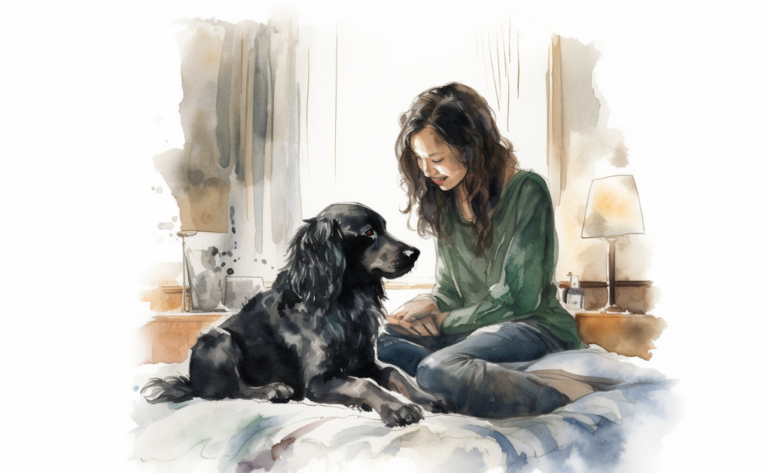Parainfluenza in Dogs: Causes, Symptoms, Diagnosis, Treatment
What is it?
How is it Treated?
Breed Predispositions
Chihuahuas Pomeranians Yorkshire Terriers Bulldogs Boxers Pugs Labrador Retrievers Golden Retrievers Doberman Pinschers Rottweilers
One day, a pet owner named Rachel noticed that her beloved Shih Tzu, Bella, was showing signs of respiratory distress, such as coughing and wheezing. After taking Bella to the vet, it was discovered that she was suffering from parainfluenza, a highly contagious viral infection that affects the respiratory system in dogs. In this blog post, we will explore the causes, symptoms, and treatment options for parainfluenza in dogs, as well as ways to prevent it from occurring in the first place.
Canine parainfluenza is a highly contagious respiratory disease brought on by the canine parainfluenza virus (CPIV). This parainfluenza virus is related to several other pathogens responsible for kennel cough or canine infectious tracheobronchitis, a prevalent upper respiratory tract condition affecting a large number of dogs. Besides CPIV, additional pathogens like Bordetella bronchiseptica and canine distemper virus contribute to canine respiratory disease as a component of other canine illnesses.
The primary mode of transmission for canine parainfluenza virus infections is through airborne particles and direct contact with infected dogs, contaminated surfaces, or objects. Consequently, the risk of infection escalates in areas where numerous dogs gather, such as shelters, boarding kennels, or during events like shelters and canine races. The likelihood of spreading the virus among the canine population is particularly high when numbers of dogs are kept together in close quarters.
To protect your pet’s health, it is vital to be aware of canine parainfluenza and take preventive measures, especially when visiting locations where dogs with respiratory disease might be present.
What are the Causes of Parainfluenza Virus in Dogs?
Canine parainfluenza, a significant contributor to canine cough, is a highly contagious ribonucleic acid virus that causes respiratory infections in dogs.
This highly contagious ribonucleic acid virus primarily spreads through airborne particles when an infected dog coughs, sneezes, or barks, releasing respiratory secretions into the air.
Susceptible dogs can contract the virus by inhaling these particles, having direct contact with infected dogs, or indirectly through contaminated objects like water bowls, toys, bedding, or surfaces.

Other factors that increase the risk of contracting canine parainfluenza can vary but include close contact with infected dogs, especially in high-density environments such as kennels, shelters, or dog parks, and inadequate vaccination or weakened immune systems due to age or underlying health conditions.
In addition, the virus is usually transmitted through the air and spreads quickly, so pet owners should be vigilant.
Other viruses that can cause canine infectious respiratory disease include canine parvovirus, canine adenovirus type 2 (canine adenovirus-2), and canine coronavirus. Puppies, older adult canines, and toy breeds with weakened immune systems are particularly vulnerable to the ribonucleic virus that causes respiratory infections, such as parainfluenza. Moreover, they may be more likely to develop pneumonia due to thick secretions caused by throat irritation. Therefore, keeping your canine companion away from other dogs that may have been exposed to the virus is essential.
Symptoms of Parainfluenza in Dogs
Symptoms of canine parainfluenza can vary in intensity based on factors such as age, general health, and immune system strength. However, typical first symptoms of a canine parainfluenza infection, a respiratory illness in dogs, include the following:
- Dry cough: A persistent, hacking cough is the most characteristic symptom of parainfluenza infection, often described as a “goose honk” cough or a sound that seems like the dog has something caught in its throat.
- Sneezing: Infected dogs may frequently sneeze as the virus irritates their respiratory tract.
- Nasal discharge: Clear or mucoid nasal discharge can be observed as the virus affects the dog’s upper respiratory system.
- Conjunctivitis: In some cases, dogs may develop redness, discharge, or swelling in the eyes due to inflammation caused by the virus.
- Fever: Some dogs may develop a mild to moderate fever as their immune system responds to the infection.
- Lethargy: Infected dogs may appear more tired or less energetic than usual due to the effects of the virus on their overall health.
- Loss of appetite: Dogs with parainfluenza may show decreased interest in food as they experience general discomfort or malaise.
The parainfluenza virus is related to canine distemper and is easily spread among dogs, increasing the risk of contracting the virus. The intensity of these symptoms may vary, and the virus infection is highly associated with canine infectious respiratory outbreaks. Infected animals, especially those with respiratory issues, can transmit the virus to others.
Parainfluenza infection is usually mild to moderate, and dogs recover with appropriate supportive care. However, young puppies, elderly dogs, and those with weakened immune systems are more susceptible to severe infections or complications, such as secondary bacterial infections or pneumonia. Therefore, if you suspect your dog is showing symptoms of parainfluenza, it is essential to consult a veterinarian for a proper diagnosis and appropriate treatment.
Diagnosis of Canine Parainfluenza Virus
Diagnosing parainfluenza in dogs involves evaluating the dog’s clinical signs, obtaining a thorough patient history, and performing laboratory tests to identify the presence of the canine parainfluenza virus (CPIV) or rule out other potential causes of the symptoms. This infection is usually transmitted and found in many dogs, often spread from dog to dog.
- Clinical signs and patient history: Veterinarians will examine the dog’s symptoms, such as persistent, dry, hacking cough, sneezing, nasal discharge, and potentially fever or lethargy. They will also gather information about the dog’s health, vaccination status, and recent exposure to other dogs, especially in high-density environments.
- Laboratory tests: To confirm a diagnosis of parainfluenza or rule out other potential causes of the symptoms, veterinarians may perform various laboratory tests, including:
- Polymerase chain reaction (PCR) test: PCR testing is a molecular technique that detects the presence of the CPIV’s genetic material in the dog’s respiratory secretions, such as nasal or throat swabs. This test can provide rapid and accurate results, but availability may vary depending on the veterinary clinic or laboratory.
- Virus isolation: In some cases, veterinarians may attempt to isolate the CPIV from the dog’s respiratory secretions using specialized cell cultures. This method can be time-consuming and may only be widely available in some veterinary practices.
- Serology: Blood tests can be performed to detect the presence of antibodies against the CPIV in the dog’s bloodstream. A significant rise in antibody levels over time may indicate an active infection. However, this method may be less helpful in diagnosing acute diseases and may not differentiate between vaccination-induced antibodies and those produced in response to natural infection.
- Additional tests: Veterinarians may perform other tests, such as complete blood count (CBC), blood chemistry profile, or radiographs (X-rays), to assess the dog’s overall health and rule out other potential causes of respiratory symptoms.
It is essential to note that no single test is definitive for diagnosing parainfluenza, and veterinarians often use a combination of diagnostic tools, clinical signs, and patient history to make an accurate diagnosis. Early detection and appropriate supportive care are crucial for managing the infection and ensuring a dog’s recovery.
Treatment Options for Parainfluenza Virus Infection in Dogs
Treatment options may include supportive care to manage the symptoms and help the dog’s immune system fight off the virus. However, since it is a viral infection, antibiotics are generally ineffective against the parainfluenza virus.
- Supportive care: The primary goal of treatment for canine parainfluenza is to keep the dog comfortable and manage any clinical signs. This may involve providing a comfortable and quiet environment, ensuring proper hydration, and offering a well-balanced and easily digestible diet. In some cases, veterinarians may recommend using a humidifier or vaporizer to help alleviate respiratory symptoms by maintaining moist air.
- Cough suppressants: If the dog is experiencing a persistent or severe cough, the veterinarian may prescribe cough suppressants to provide relief. It is essential only to use medications the veterinarian prescribes, as some over-the-counter human cough medications can harm dogs.
- Antibiotics: Although antibiotics are ineffective against the parainfluenza virus, they may be prescribed if a secondary bacterial infection is suspected or confirmed. In these cases, antibiotics help prevent or treat bacterial infections, reducing the risk of complications.
- Nonsteroidal anti-inflammatory drugs (NSAIDs): In some cases, the veterinarian may prescribe NSAIDs to reduce fever and inflammation, helping the dog feel more comfortable during recovery.
- Monitoring and follow-up: It is essential to monitor the dog’s condition closely and follow the veterinarian’s recommendations for care. If the dog’s symptoms worsen or do not improve within a reasonable timeframe, a follow-up visit to the veterinarian may be necessary.
Prevention Tips for Parainfluenza in Dogs
There are several steps you can take to help prevent your dog from contracting parainfluenza:

- Vaccination: Ensure your dog receives the parainfluenza vaccination as part of their regular vaccination schedule. CPIV vaccination is typically included in the combination of vaccines given to puppies and adult dogs. Consult your veterinarian about the appropriate vaccination schedule and booster shots for your dog to maintain immunity.
- Avoid high-risk environments: Limit your dog’s exposure to high-density environments where the virus can spread more efficiently, such as dog parks, kennels, dog shows, or shelters, especially if your dog has not been vaccinated or has a weakened immune system.
If your dog needs to be boarded or attend a doggy daycare, choose facilities with strict hygiene protocols and vaccination requirements.
- Hygiene and sanitation: Practice good hygiene by regularly cleaning and disinfecting your dog’s food and water bowls, toys, bedding, and living spaces. Wash your hands thoroughly after handling other dogs, especially if they show signs of respiratory illness, before interacting with your dog.
- Quarantine sick dogs: If your dog is diagnosed with parainfluenza or another contagious respiratory infection, follow your veterinarian’s advice on quarantining your dog to prevent the spread of the virus to other dogs. This may involve isolating your dog from other pets and avoiding contact with unfamiliar dogs until they fully recover.
- Monitor your dog’s health: Keep an eye on your dog’s health and be vigilant for any signs of respiratory illness, such as coughing, sneezing, or nasal discharge. If you notice any symptoms, consult your veterinarian promptly for a proper diagnosis and appropriate treatment.
Following these preventive measures and working closely with your veterinarian can reduce your dog’s risk of contracting parainfluenza and help maintain its overall health and well-being.
Frequently Asked Questions
Disclaimer: The information provided on this veterinary website is intended for general educational purposes only and should not be considered as a substitute for professional veterinary advice, diagnosis, or treatment. Always consult a licensed veterinarian for any concerns or questions regarding the health and well-being of your pet. This website does not claim to cover every possible situation or provide exhaustive knowledge on the subjects presented. The owners and contributors of this website are not responsible for any harm or loss that may result from the use or misuse of the information provided herein.







